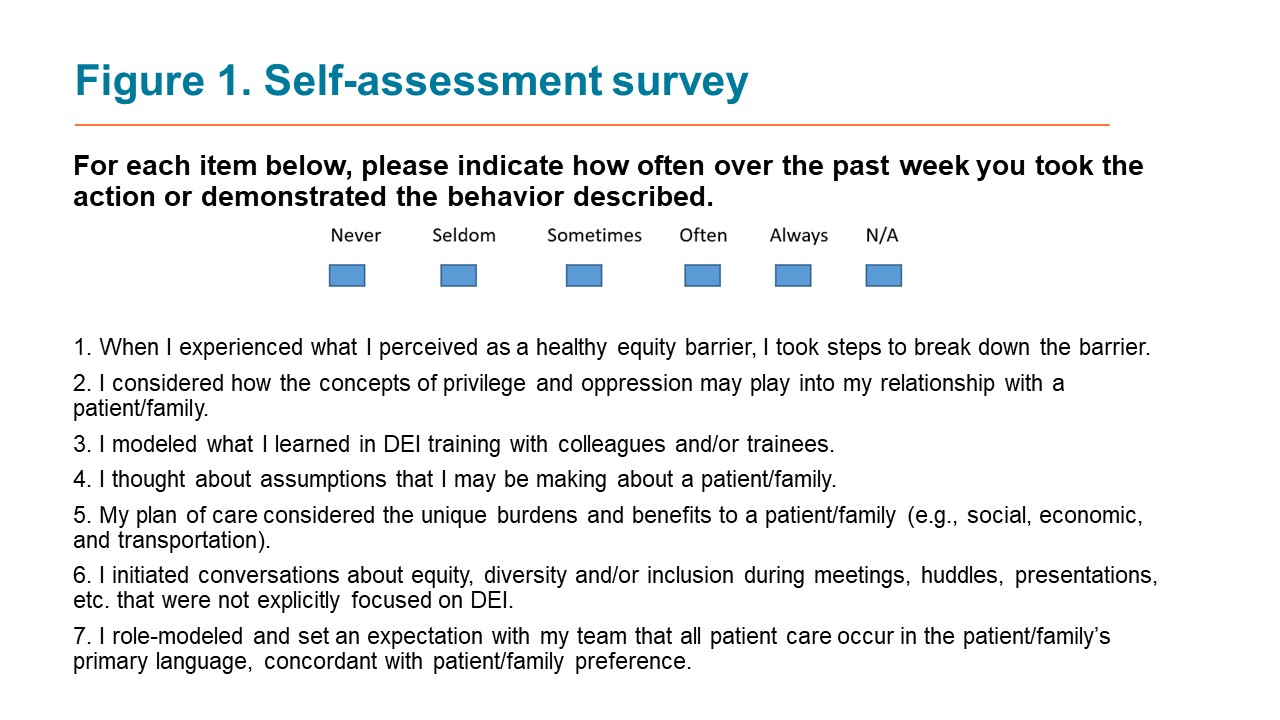Health Equity/Social Determinants of Health
Health Equity/Social Determinants of Health 2
525 - A quality improvement intervention to increase equity-focused behaviors and interpreter use
Publication Number: 525.117

Sahar N. Rooholamini, MD, MPH (she/her/hers)
Assistant Professor
University of Washington School of Medicine
Seattle, Washington, United States
Presenting Author(s)
Background:
Clinicians are critical to addressing health disparities.Few quality improvement (QI) interventions have demonstrated improvement in both equity-focused provider behaviors and patient outcomes. We studied a Diversity, Equity and Inclusion (DEI) QI intervention among medical staff at a pediatric medical center. We hypothesized associated improvements in equity-focused behaviors and interpreter use for participants compared to non-participants/waitlist controls.
Objective:
To increase and sustain:(1) the probability of top-box ('often' or 'always') responses in a DEI self-assessment survey to 90% or greater after adjusting for secular trends; (2) interpreter use for patients with a language other than English (PLOE), comparing patients of participants to patients of non-participants/waitlist controls.
Design/Methods:
(1) Participants reported DEI behaviors using weekly self-assessments (Fig. 1) during the intervention, and monthly starting 3 months pre-intervention and 6 months post-intervention. Mixed effects logistic regression models with fixed effects of time-period and random effect of participant modeled the binomial probability of ‘often’ or ‘always’ engaging in behaviors. Time period was assessed categorically based on model fit and timing of responses in relation to educational sessions. Population-averaged probabilities and odds ratios for each time-period were calculated with 95% confidence intervals. (2) Interpreter use was assessed for PLOE during inpatient, ED or outpatient visits. Mixed effects models computed odds ratios comparing receipt of an interpreter when cared for by a participant, non-participant, or waitlist control. Similar mixed effects models were used to calculate odds of inpatient encounters having target ( >3/day) or low (< 1/day) interpretation rates.
Results:
There were 123 participants who completed at least 1 survey by the end of the project (median:9 surveys, range 1-19). The probability and odds ratios for reporting ‘often’ or ‘always’ engaging in a behavior increased over time for all 7 behaviors (Fig. 2; Table). Compared to baseline, the increase in probability was significant after 2 educational sessions and after project completion for all behaviors, and significant after 1 session for all behaviors except for use of interpreters, which was the most highly engaged behavior at baseline. Results of interpreter use are pending.
Conclusion(s):
A DEI QI intervention was associated with significant improvements in self-assessed frequency of equity-focused behaviors which persisted for 6 months after completion. Analysis of interpreter use will be available by PAS.
.jpg)
Table.-Self-assessment OR.jpeg
